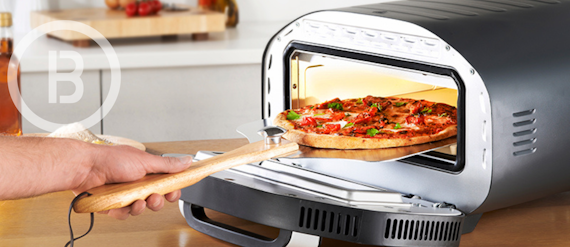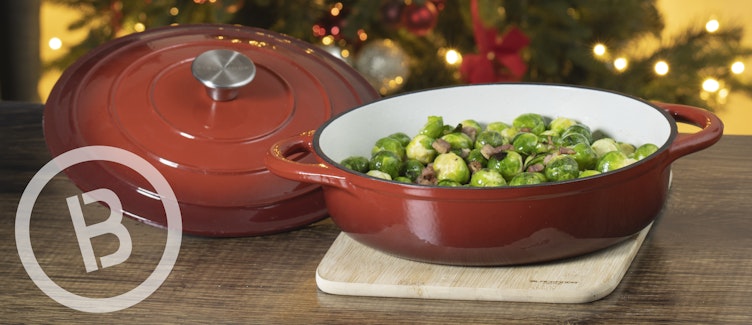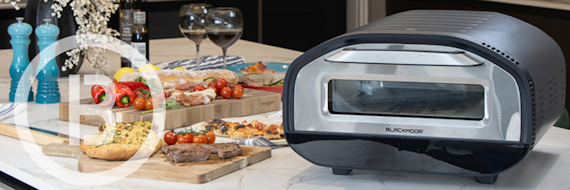

Free UK DeliveryNo Minimum Spend
30 Day Returns Policy
Buy Now Pay LaterClearpay & Klarna
Excellent ReviewsCheck out our Trustpilot Page
- Blackmoor's Nutritionist Kate Withington shares her healthy hacks - from using no oil, opting for manuka honey, and putting sprouts in an ice bath
- Kate also shares her roast potato and sprout recipes and top tips for homemade stuffing
It’s just about that time of year where we get to sit and enjoy all the culinary treats that the festive season offers. However, for those who are watching their waistline, it can prove a little more troublesome to stay on your diet’s ‘nice list’.
Kate Withington, private nutritionist, explains how some simple hacks can create a festive feast that saves on calories but still splurges on flavour.
Switch to rapeseed oil, olive oil or fresh air for roasting
Kate says: The first step for making your Christmas dinner healthier is to use rapeseed oil or olive oil when roasting anything such as your turkey or roast potatoes as these are both unsaturated fats. Not only do they give a beautiful crisp result, but they’re also heart healthy unlike the saturated fat in butter.
“Even though this is a healthier method, all fats are still high in calories so you should still watch how much you use.
“If you really want to be an angel, don’t use any fats at all and opt to use a non-stick roasting tray – this saves on calories and still gives a really crispy result! I always use my Blackmoor Carbon Steel Roasting Tray”.
Stay traditional with turkey
Kate continues: “Turkey is great to have on a Christmas dinner as it is a healthy, low-fat meat which is high in protein and B vitamins. It seems that many people are drifting away from turkey and trying other festive favourites such as gammon, beef or even duck. I would advise sticking to tradition if you are watching the waistline.
“Turkey can be extremely tasty if seasoned well and cooked to perfection – just remember to only have a little of the skin as this is where the calories will rise quickly!”
Pass me the vegetables, honey
“Christmas dinner is a great opportunity to have a huge variety of vegetables and cash in on your five-a-day” says Kate.
“If you want to make it all a little more festive when cooking your veggies, I’d be grabbing my mauka honey and giving them a little coating.
“Manuka honey has lots of benefits for the body such as supporting gut health, could even offer antiviral properties and of course, it still makes your food taste great.
“And remember, as a guide, include enough vegetables to cover a third to a half of your plate, this will also help keep the more calorific items to a smaller sized sin!”
All about the roasties
Kate continues: “Roast potatoes tend to be high in fat to start with so a good way to reduce the fat is to roast your potatoes in larger chunks, this will reduce the amount of fat each potato absorbs.
“Oil can be used to create the crispiest roast potatoes, but as I said earlier, make sure you’re using one of the healthier oils such as rapeseed oil or olive oil.
“I always pre-heat the oil in the oven and add some plain flour over the spuds to aid in their end result. I always use my trusty Carbon Steel Roasting tray and follow these steps:
- Heat oven to 190C/fan 170C/gas 5. Peel the potatoes and cut in larger chunks or in half; if very large, cut into quarters, or leave whole if they are small. Tip into asaucepan, cover with cold water, then bring to the boil. Set the timer and boil for exactly 2 mins. Drain the potatoes well, then toss in the colander to fluff up their surfaces, sprinkling over the flour as you go.
- Place a large, sturdyroasting tray over a high heat, then tip in the fat and oil. (Tip: to get really crispy roast potatoes, make sure the fat or oil is really hot before you add the potatoes.) When sizzling, lower in the potatoes carefully, then gently brown in the hot fat for about 5 mins so all the sides are covered with oil.
- Roast undisturbed for 20 mins, then remove from the oven and gently turn them over, I use a fish slice to make this easier. Place the tray on the hob to heat the oil, then return to the oven and cook for another 20 mins. Repeat this all again and give them a final 20 mins in the oven, by which time you should have perfect roast potatoes.
Steer away from shop bought stuffing
“If there is one food that will make the calories double, it is stuffing!
“Stuffing is typically high in calories, fat, sodium, and carbohydrates but that doesn’t mean you can’t enjoy it, remember that all foods can fit into a healthy diet in moderation. So, if you’re serving yourself some stuffing – try to stay on the small side.
“One of the biggest sources of fat and calories is hiding in your stuffing. Often made with lots of bread, fatty meat, butter and other calorie-laden ingredients, the stats can quickly add up.
“In fact, a cup of stuffing can contain as much as 400 calories and more than 25 grams of fat!
“If I fancy stuffing, I make my own. Instead of using bread or rice, I choose whole grain as it is better for your health, opting for 100 percent whole-wheat or whole-grain bread.
“I would always use lean turkey sausage instead of pork sausage as these cut the fat content, but the taste is still really good. Turkey is a great low-fat meat and contains lots of protein, helping to make the stuffing slightly healthier. If I do want a little treat, I add a bit of bacon or prosciutto as this can add lots in the flavour department.
“Furthermore, I replace any butter used with a heart-heathy oil or even chicken stock.
“The way you season your stuffing has a lot to do with how good it tastes, so bold-up the flavour with fresh herbs like sage, rosemary, thyme, and parsley. Even mixing in some pepper, cinnamon, or nutmeg will add some extra zing.”
No oil Yorkies
“Yes, you heard me right, you can make impressive Yorkshire puddings with no oil,” explains Kate.
“You just need to have the right tools for the job. I make sure I use a non-stick cupcake tray so not only don’t you need any oil, but you can pop the puddings out with ease.”
“I make sure the tray is really warm before adding my mixture. If you are too nervous to try no oil, you can add some fats, just again go for rapeseed or olive oil to help with calories and only use a splash.”
Time to ice the sprouts
“Seeing as it’s Christmas, I will let you into a little secret – the best way to get this festive favourite sprouting with flavour is to give them an ice bath,” shares Kate.
“Here’s how I do it…
- Prepare the sprouts by trimming the ends and removing any hard outer leaves.
- The next step is to quickly place them in a large pan of boiling water for two minutes, then remove from the heat and transfer them to icy cold water bowl or pan to stop the cooking process. This process is called blanching and helps them to cook faster and maintains the delicious colour, flavour and nutrients after cooking.
- In a large frying pan, or casserole dish, fry 100g of lean pancetta with two teaspoons of garlic until crispy, then add the sprouts to the pan and cook for a further 2-3 minutes before serving.
Gravy time
Kate ended: “You can make your gravy healthier by using chicken or vegetable stock instead. Simply add your choice of spices and a low carbohydrate thickening option such as whole-wheat flour to the stock.
“If you do want to stay more traditional and use the juices from the meat, first spoon off the fat and then you can always include vegetable cooking water for extra flavour and nutrients.”
